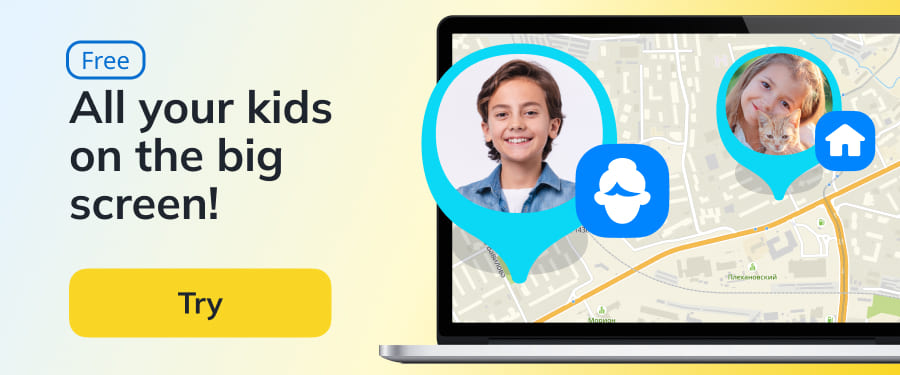How to Support Your Child’s Big Feelings

Every day, children experience a wide range of emotions. One of the most important life skills is learning to recognize and process these emotions. Books and life experience can help—but children learn this best in the real world with attentive adults by their side.
❗ Why It Matters
When children understand their emotions and can express them, those emotions start to help rather than hinder them.
Research shows that emotional intelligence (the ability to understand, manage, and use emotions effectively) is linked to less stress, anxiety and depression, prosocial behaviors, better peer relationships, and better academic performance. In essence, emotional intelligence promotes resilience, the ability to manage and recover from challenging situations.
Expressing emotions means putting them into words, showing them through facial expressions and body language, and sharing what you feel. It’s not about “bottling up” or “letting it all out”—it’s about experiencing emotions in a safe and balanced way, both for the child and those around them.
👣 5 Steps to Talking About Emotions and Building Emotional Connection
World-renowned psychologist Dr. John Gottman developed an approach that helps parents support their children during moments of strong emotion. It includes five simple steps:
- Notice the emotion—through behavior, tone of voice, facial expression. For example, your child might frown, grumble, or light up with joy.
- Choose the right moment— connect when your child is open to it.
- Show acceptance—“You’re feeling angry. That’s okay.” or “You’re so happy! I love seeing you like this.”
- Help name the emotion—“Are you feeling hurt?” “It looks like you’re sad.” “You seem excited, is that right?”
- Look for solutions together—“What could help you right now?”
Conversations like these help children become more self-aware and able to recognize, acknowledge, and accept their emotions instead of ignoring them or feeling ashamed of them. It’s important not to label emotions as “good” or “bad”—even anger, fear, or shame can reveal what truly matters to a child and where their personal boundaries lie.
Feeling any emotion is completely normal. And when a child knows this, it’s easier for them to relate both to themselves and to others.
🗣 When to Talk About Emotions
If your child is crying, yelling, or slamming doors, it is quite likely they won’t be able to hear you in that moment. What matters more than anything is offering support, not trying to start a conversation.
A helpful tool for recognizing when your child is ready to talk is the “Zones of Regulation” framework developed by occupational therapist Leah Kuypers. It teaches children to recognize their emotions and manage them.
Occupational therapy helps children (and adults) develop skills for everyday life—like getting dressed, playing, learning, and interacting with others. It’s especially useful for children who struggle with motor control, emotions, attention, or handling daily challenges.
According to this framework, emotional states fall into four zones:
- 🟢 Green — calm, focused. A good time for a conversation.
- 🟡 Yellow — tense, anxious, or irritated. You can gently try to connect.
- 🔴 Red — very angry or having a meltdown. Best to give the child space and time.
- 🔵 Blue — sad, tired, or apathetic. Offer quiet support and presence, without pushing.
💡 The best time to talk about emotions is when your child is in the green or yellow zone. In the red zone—help them calm down first. In the blue zone—help them feel safe and comforted.

The best time to talk feelings is in the green or yellow zone | Source: nhsborders.scot.nhs.uk
💁♀️ How to Model Emotional Awareness for Your Child
You don’t need a special occasion to talk about emotions. It becomes a natural part of life when you’re mindful of your own emotions and not afraid to talk about them.
Here are some simple ways to do this every day with your child:
- Speak about your own feelings aloud: “I felt really frustrated today because I was tired.”
- Talk about the emotions of characters in books or movies.
- In non-dangerous or highly emotionally charged situations, start with emotions before addressing behavior: instead of “Why did you do that?” try “How are you feeling right now?”
- Don’t try to “fix” feelings: “I see that you’re upset” feels much safer than “Don’t worry about it.”
- Remind your child that all emotions are normal. Even uncomfortable ones are okay to experience.
💬 Helpful Phrases for Talking About Emotions
If you’re unsure of how to start a conversation, here are some ideas.
To open a conversation:
- “You look so happy—is it because of [event]? Want to tell me about it?”
- “Would you like to tell me what happened? I’m here.”
- “It seems like you’re having a hard time right now. Let’s figure it out together.”
To help name an emotion:
- “You’re glowing today. What made you so happy?”
- “I think you might be a little nervous. Does that happen sometimes before important things?”
- “You’re quiet today. Are you feeling sad, or maybe just tired?”
To show acceptance:
- “It’s okay to feel angry. I feel that way sometimes, too.”
- “I understand you feel disappointed when you can’t go outside.”
- “You feel proud of yourself and you should! I’m proud of you, too.”
To move toward solutions:
- “You really enjoyed that activity. Would you like to do it again?”
- “What do you need right now—some alone time, a chat, a hug?”
- “When I’m angry, it helps me to do something with my hands, like washing dishes. What helps you when you feel angry?”
Learning to understand and process emotions is an important skill for both children and adults. It helps us listen to each other more effectively, resolve conflicts more easily, and feel closer to the people we care about. And it’s something we can practice every day, starting with something simple—like saying, “I’m feeling a little sad today—could you give me a hug?”
References:
- How To Raise an Emotionally Intelligent Child, Parents, 2024
- The Zones of Regulation, NHS Borders Children and Young People’s Occupational Therapy Service
- Raising An Emotionally Intelligent Child, Gottman, J, New York: Simon & Schuster, 2018
- The Gift and Power of Emotional Courage, TED Talks, 2017
- Developing Resilience and Harnessing Emotional Intelligence, Indian Journal of Psychiatry, 2024
Проверьте электронный ящик



















